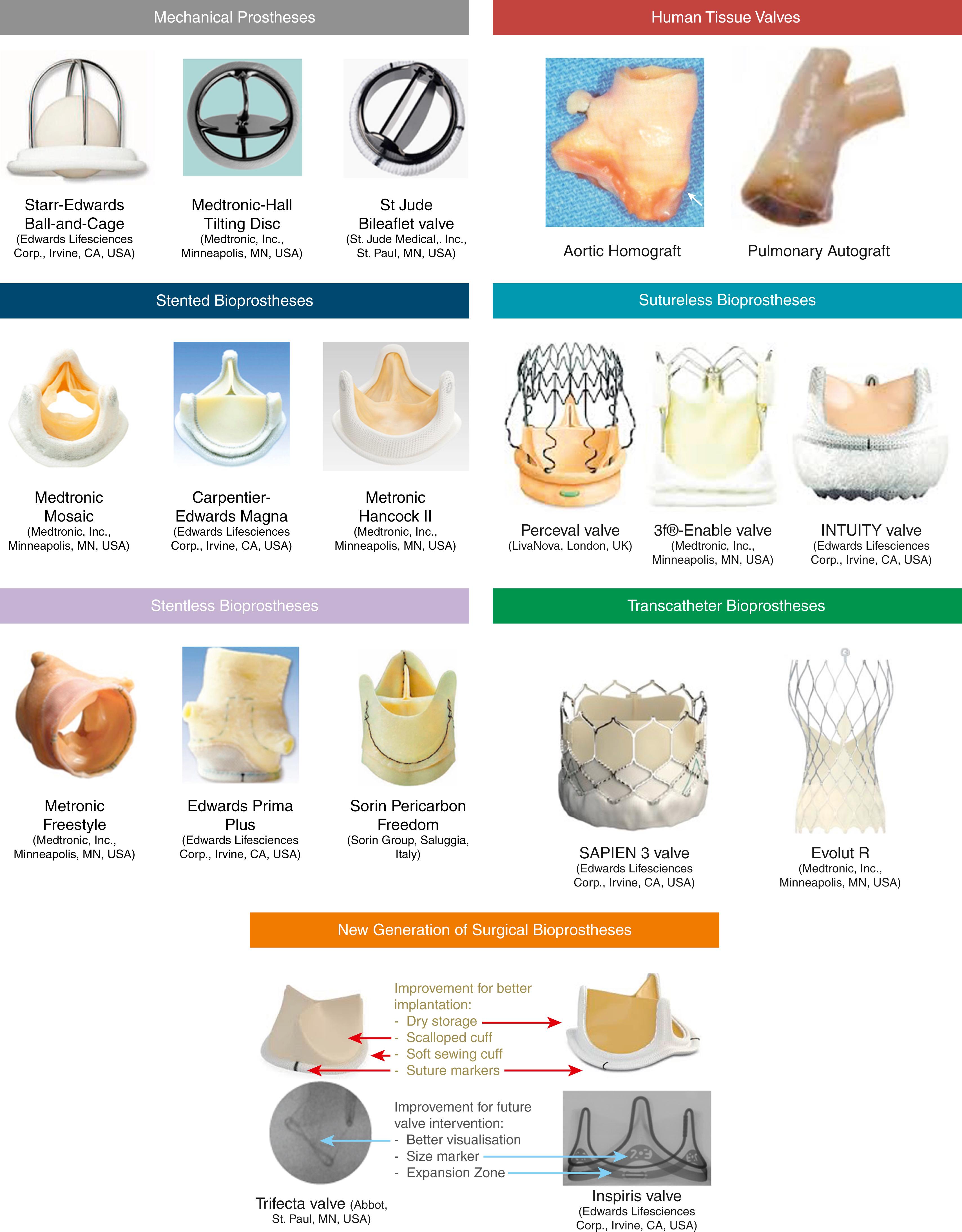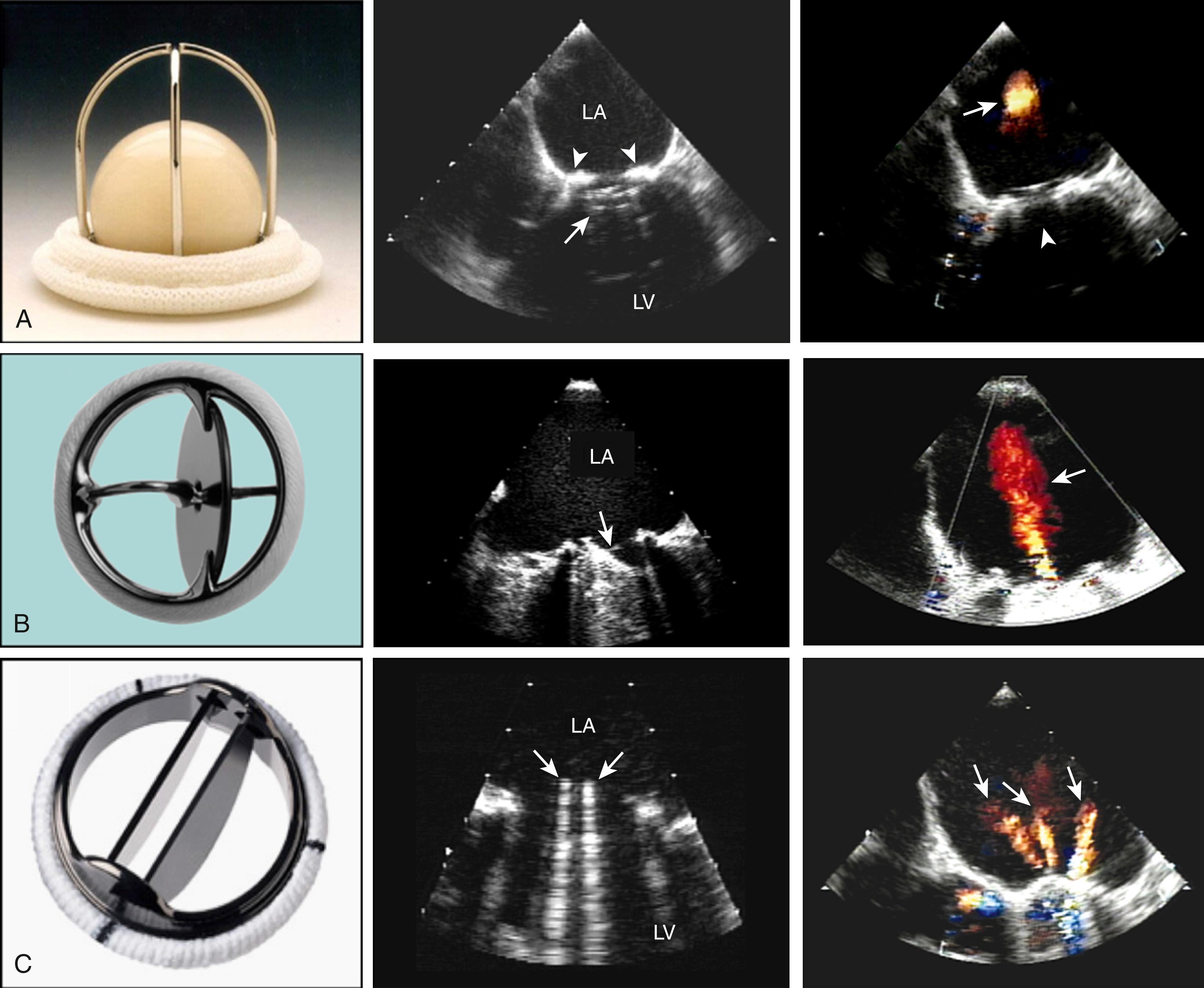Physical Address
304 North Cardinal St.
Dorchester Center, MA 02124
The authors thank Drs. Jean G. Dumesnil and Haifa Mahjoub for their contributions to this chapter in the previous edition.
More than 300,000 patients per year require valve replacement in the world, and this number is estimated to triple to more than 850,000 by 2050. The ideal valve substitute should mimic the characteristics of a normal native valve with excellent hemodynamics, long durability, high thromboresistance, and excellent implantability. Unfortunately, this ideal valve substitute does not exist, and each of the currently available prosthetic valves has inherent limitations. Despite the marked improvements in prosthetic valve designs and procedures over the past decades, valve replacement does not provide a definitive cure to the patient, and the patient’s prognosis may be affected by prosthesis-related complications. However, many of these complications can be prevented or their impact minimized through optimal prosthesis selection in the individual patient and careful medical management and follow-up after implantation. In this regard, Doppler echocardiography is the method of choice for the evaluation and follow-up of prosthetic valve function. This evaluation follows the same basic principles used for the evaluation of native valves with some important particularities and caveats because of significant differences between the fluid dynamics of prosthetic valve and those of native valves.
Surgical valve replacement is the standard therapy for patients with severe nonrepairable mitral and tricuspid valvular heart disease as well as for patients with severe aortic valve disease. Among the surgical prosthetic valves, there are two main categories: the mechanical valves and the tissue valves. The stented bioprosthetic valves are by far the most frequently used tissue valves followed by stentless bioprostheses, homografts, and autografts ( Fig. 109.1 ). During the past decade, there has been a dramatic shift toward the use of bioprosthetic valves rather than mechanical valves for surgical aortic valve replacement in the United States. Furthermore, transcatheter aortic valve implantation (TAVI) has emerged as a valuable alternative to surgical valve replacement in patients with severe aortic stenosis (AS) and with high, intermediate, or low surgical risk. In 2019, transcatheter bioprosthetic valves implantation in the aortic position worldwide was estimated at 144,000 and is expected to double by 2025.

The three basic types of mechanical valves are ball-cage, tilting-disk, and bileaflet valves (see Fig. 109.1 ). Given that there are major differences in the design of these three types of valves, their flow pattern and hemodynamics differ markedly ( Fig. 109.2 ). Furthermore, all these types of mechanical valves have a normal regurgitant volume that includes a backflow related to the backward motion of the occluder(s) (i.e., the closing volume) and leakage backflow through the components of the prosthesis (leakage volume) ( Fig. 109.3 ). This “built-in” regurgitation theoretically prevents blood stasis and thrombus formation by a washing effect. As opposed to the pathologic regurgitant jets, the normal regurgitant jets are characterized by being short in duration, narrow, and symmetrical.


The only ball-cage valve that is still encountered nowadays in patients is the Starr-Edwards 1260, which consists of a silastic ball with a circular sewing ring and a cage formed by three metal arches located at 120-degree intervals around the sewing ring (see Fig. 109.1 ). Antegrade blood flows around the ball, and a large wake is generated in the central part (see Fig. 109.2 ). Large regions of flow separation are responsible for thrombogenicity of the valves and the obstruction to flow caused by the valve results in high pressure gradients. The normal regurgitant flow is composed mainly of the closing volume (2–6 mL per beat) that can be visualized on color-flow Doppler imaging (see Fig. 109.3 ). This type of valve is no longer implanted, but owing to its relatively good durability, several thousands of patients still have ball-cage valves.
Monoleaflet or tilting-disk valves use a single circular disk that rotates within a rigid annulus to occlude or open the valve orifice (see Fig. 109.1 ). The disk is secured by lateral or central metal struts. The opening angle of the disk relative to the valve annulus ranges from 60 to 80 degrees, resulting in two orifices of different size (see Fig. 109.3 ). The jet through the major orifice is semicircular in cross-section and flow through the minor orifice consists of one, two, or three jets. Depending on the number of struts, minor orifice jet velocities are 30% to 40% lower than those of major orifice (see Fig. 109.2 ). The nonperpendicular opening angle of the valve occluder tends to slightly increase the resistance to blood flow, particularly in the major orifices.
To minimize flow turbulence, the preferred orientation of monoleaflet valves in the aortic position is with the major orifice toward the right posterior aortic wall and in the mitral position is with the major orifice oriented toward the left ventricular free wall as opposed to the septum. Because of the eccentricity of the jet in the major orifice, it is also crucial to use multiwindow interrogation with continuous-wave (CW) Doppler to get the maximum transvalvular velocity. Normal regurgitant volume is low (5–9 mL per beat) and includes the closing volume as well leakage backflow through small gaps around the perimeter of the valve, and with the Medtronic Hall valves, there is a small amount of regurgitation around the central strut (see Fig. 109.3 ; , ![]() ).
).
Video 109.1. Transthoracic echocardiography long-axis view of a Medtronic-Hall monoleaflet aortic prosthesis with normal valve function.
Video 109.2. Transesophageal echocardiography long-axis view at 121 degrees with color Doppler imaging of a Medtronic-Hall monoleaflet aortic prosthesis with a normal flow pattern.
Become a Clinical Tree membership for Full access and enjoy Unlimited articles
If you are a member. Log in here